Medieval
What it was like to live in Kirklees during the medieval period
Britain's links with Rome were broken after 410 AD. During the next two centuries the people of the West Yorkshire region belonged to a Christian Kingdom called Elmet. In 617 AD the Anglo-Saxon kings of Northumbria conquered Elmet. At this time the Anglo-Saxons were pagans, but soon converted to Christianity.
In the centuries that followed, many Christian stone monuments were built. Decorated with distinctive carvings, they are the only remains of this period found. Most Anglo-Saxon carved stones were set up as gravestones to wealthy landowners. Carvings found near later churches indicated that there were churches there in Saxon times. Finds such as these suggest there was a major religious establishment at Dewsbury.
The Vikings first started to settle in Yorkshire in the 870s AD, but settlement was probably sparse in the Huddersfield area. There is evidence they travelled through, and their legacy is evidenced in place names such as Fixby and Ravensknowle.
After the Norman Conquest in 1066, the lives of ordinary people were dominated by the lord, who administered law and controlled the economy, and the church, which controlled spiritual life. The church also owned land, controlled education, and helped the sick.
William the Conqueror granted the land around Huddersfield to his friend, Ilbert de Laci. In 1150, he remodelled the old hill-fort at Almondbury (Castle Hill) into a castle, to help guard their estate. The Domesday Book from 1086 records the value of 'Odersfelt', which was 100 shillings under Edward the Confessor, but then became 'waste'.
We know little about ordinary people in the Middle Ages, as their belongings and houses were often too flimsy to survive. They were illiterate, so not mentioned in the written records. However, the whole wealth of the country depended on their efforts. Most people in the area would have worked on farms, growing crops (chiefly oats) or rearing sheep. Cloth was even being made locally by at least the 1290s, and by the 1400s some larger clothiers had emerged, such as Thomas Beaumont of Whitley Beaumont.
What to expect in the box
Pomanders were balls made to hold perfumes. Due to a belief that bad smelling air (miasma) could cause disease. Pomanders were worn or carried as a way to ward off disease. They could be hung from a chain around the neck or attached to a girdle or belt. Some contained several partitions to hold a variety of scents.
Pomanders are first recorded in the mid-thirteenth century and were initially large silver or gold balls. Over time they became shaped like nuts and ships, or even as buttons or rosary beads.
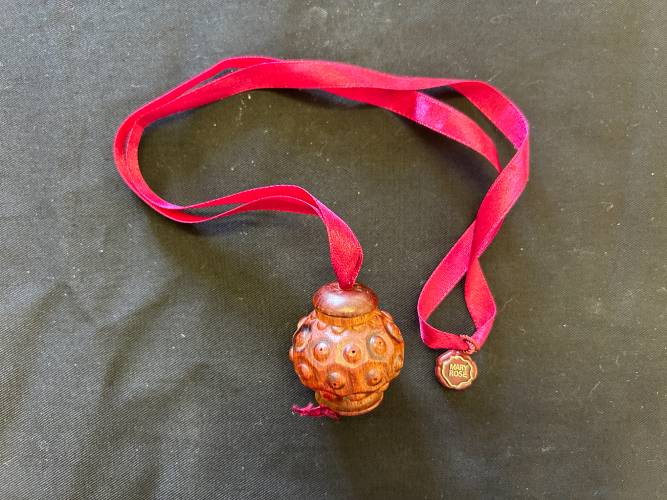
One side of the seal depicts Richard the Lionheart sat on his throne holding a sword and ball. The reverse shows him riding a horse into battle holding a shield depicting three lions. This is the first known use of this symbol which later became the royal arms of England.
Seals were used to verify that a document was really from the person it claimed to be from. Seals served the role on a document that a signature would serve now.
Richard I ruled England from 1189-1199. He spent much of his time away fighting in the third crusade where he earned himself the title of 'Lionheart' for his courage.
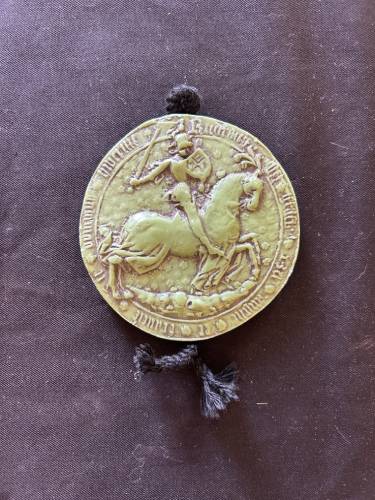
Stone crosses were found throughout medieval Britain, often in churchyards, town centres and along the sides of roads.
This is a Celtic cross; the cross represents Chrisitanity, and the circle represents eternity and the never-ending love of Christ. This design was initially used by Christian missionaries attempting to convert Irish Celts.
Some of the earliest and most intricate stone crosses date back to the 5th century, from the date of Roman withdrawal in England. Over time they were used to define special parts of monasteries.
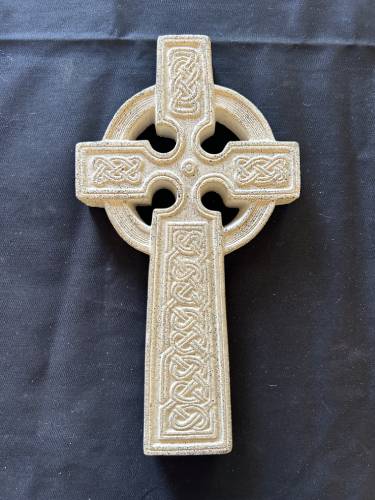
The role of bells in medieval England was much larger than it is today. The sound of the church bell would have dominated everyday life, and it would have been the loudest thing medieval people ever heard!
It was not only a means of summoning a congregation to worship, but also structured social life. In a society without clocks, ringing would mark time and alert people to curfews, announce the opening of town gates, and would be used to ward off demons and evil forces.
Every church would have had a unique bell. There are several medieval churches still in Kirklees. Thornhill Parish Church, Dewsbury, was mentioned in the Domesday Book in 1086, and the first stones at Almondbury All Hallows Church were laid in the 12th century.
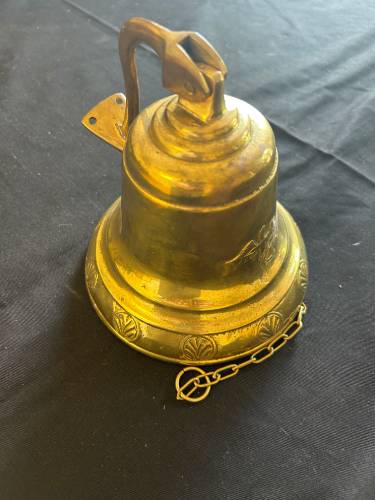
Medieval pottery was produced in Britain from the Roman era, often handmade locally and fired in a bonfire. Common pottery fabrics consisted of clay tempered with sand or shell, or a mix of sand and shell.
During the medieval period, potters began transitioning to a fast wheel and firing pots in kilns. Grooved lines, thumb-applied strips, stamping and rouletting were commonly used decorations.
From the thirteenth to the fifteenth centuries, glazed and slip pottery appeared more frequently in the marketplace, along with new fabric colours and decorations, and a large number of new forms.
They can tell us about daily life; this pottery would have been very common, and would probably have been used for cooking.
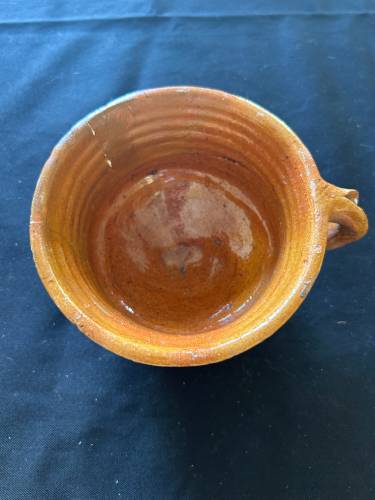
Communion cups, also known as chalices, were a significant part of religious life. They would hold the wine during communion, which Catholics believe becomes the blood of Christ.
A large chalice would be used by a priest to serve his congregation at church while a smaller one would be taken with him during his travels for the same purposes.
Medieval records suggest these chalices could be made of av ariety of materials such as silver, onyx and pewter.
They also served as relics for a church if they had been used by a saint during their lifetime. Relics were particularly important during the middle ages as it was believed that they possessed some of the holiness of the saint who had touched them.
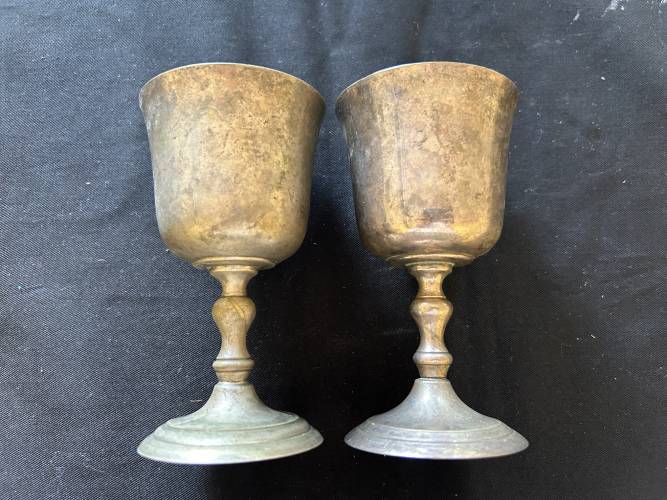
The Bayeux Tapestry was produced in the 11th century and was likely commissioned by Bishop Odo, half brother to William the Conqueror.
It is 70 metres long, and contains 58 scenes which depict the events of 1066 - from William's journey to England, to his conquest and the aftermath.
Although it is called a 'tapestry', it is actually an embroidery stitched by hand by nuns. It would have taken at least 45kg of wool, using ten colours made from different combination of dyes from plants.
The whole piece features 623 men, 190 horses, 37 ships, 35 dogs, and only three women!
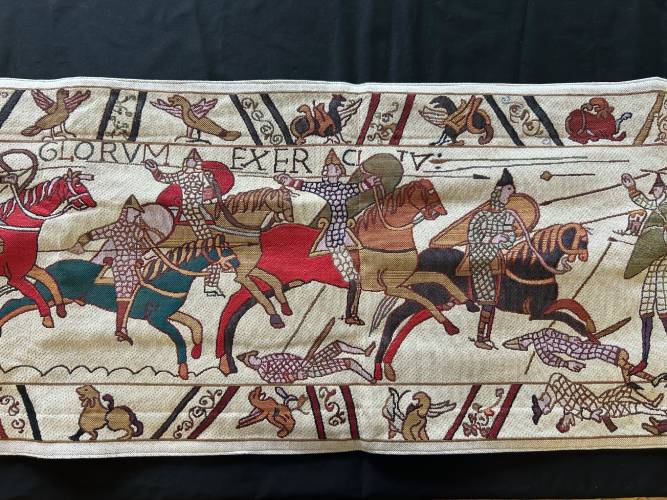
Silver pennies were first introduced by King Offa of Mercia in the 8th century, and were the main currency in the medieval period. These were often too valuable for day to day purchases and were cut into halves and quarters to produce smaller change.
In 1279, halfpennies and farthings were introduced, and then the groat (worth 4 pennies) and the half groat ( worth 2 pennies) were also put into production.
The gold penny was first issued in 1257, but only became commonly used after 1344 following the issue of the gold leopard coin worth 72 silver pence.
Money was only one way of obtaining something in the medieval period. This was an exchange economy, and bartering (swapping one item or service for another) was more commonly used in towns and villages.
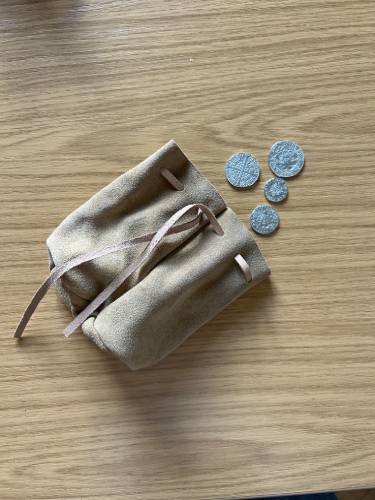
Peasants would not have much leisure time as they would be required to work the land from dawn until dusk.
However, wealthy people increasingly dedicated time to leisure activities, especially after the Norman conquest. Nobles enjoyed hunting, falconry, and playing games or gambling. They might play hide and seek (a game used to practice hunting!), hopscotch, marbles, and noughts and crosses. Dice, made from animal bone or antler, were commonly used.
When peasants did have free time, on military campaigns for example, they would spend this in alehouses, practicing their archery or attending church.
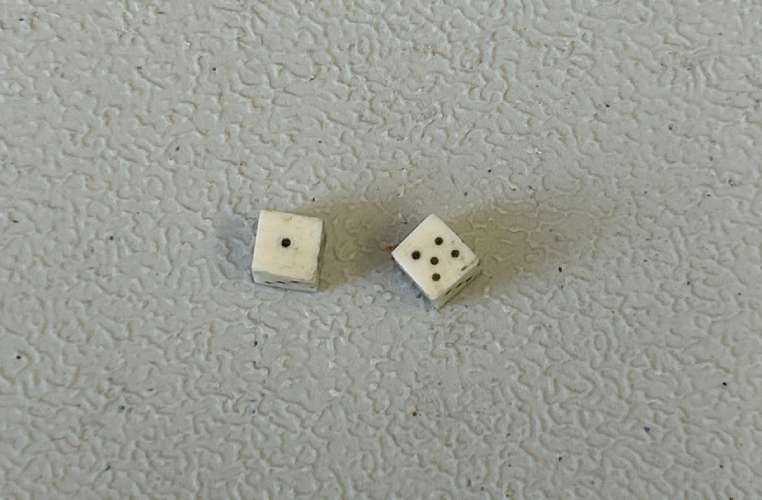
Medieval plates would have been made from horn, as well as wood and metal. The common person in medieval England would typically have used them to hold meat, such as beef or mutton, and cheese. Their bowls, made of similar materials, would have been used to hold stews typically composed of cabbages and leek.
Horn plates would be made by heating the horn to make it mouldable, then forming it into the shape of a plate.
Not many horn artifacts survive from this period as it was less durable than metal and often did not survive burial.
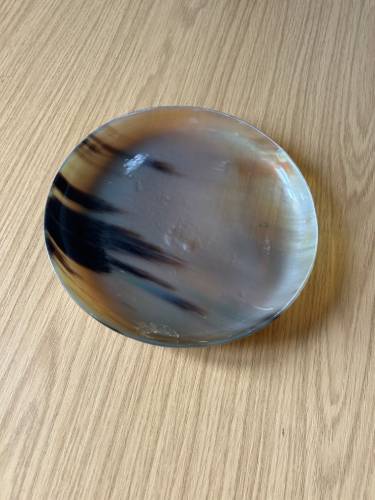
Food in this period would have been eaten from wooden bowls and plates using spoons, fingers and knives. Forks were not used in the middle ages.
There were likely two main meal times a day, dinner between 9am and 10am, and supper before it got dark.
Meals likely consisted of bread, with either roasted or boiled meat and vegetables. This was probably peas and leaks, as potatoes had yet to be brought back from America.
Horn was a very commonly used material in the Middle Ages, being used to make anything from bowls to cups to spoons. However, horn does not survive burial as well as other materials, such as metal, meaning horn artifacts are rarely found by archaeologists.
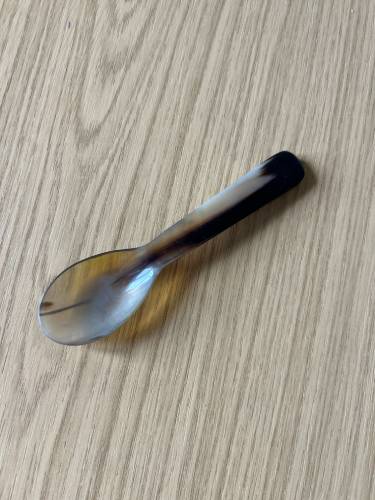
In the Middle Ages, combs were made of bone, antler or wood. These bones could come from horses, cattle, sheep, or pigs and would have taken a long time to make. They were often placed in leather pouches to protect the teeth from breaking.
Although people often assume medieval people were smelly and dirty, they did try to take care of their personal hygiene, especially because they believed bad smells (miasma) caused diseases!
A double-sided comb like this was used to brush hair and remove parasites.
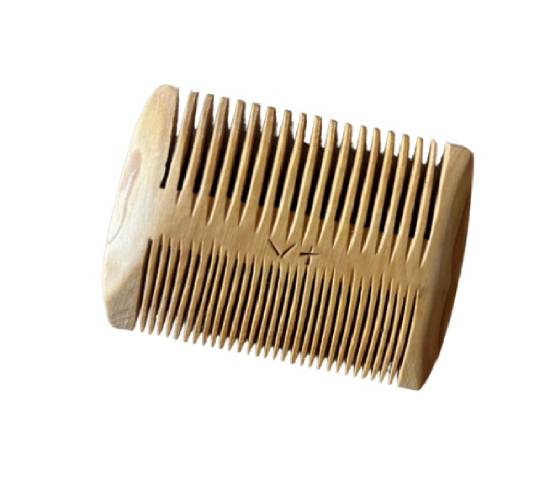
Whilst families tended to be quite big in the medieval period, and women would have spent most of their life either pregnant or recently postpartum (given birth), children were still well-loved and cared for by their parents.
From a young age they would be required to help with tasks at home, such as caring for animals, cleaning and cooking. Tiny fingerprints have even been seen on pottery from the time!
Despite this, children were still encouraged to play, and adults ensured that they got the opportunity. Archaeologists have discovered everything from toy knights and horses, to tiny cooking pots and pans.
This doll would have been used to help prepare a girl for motherhood.
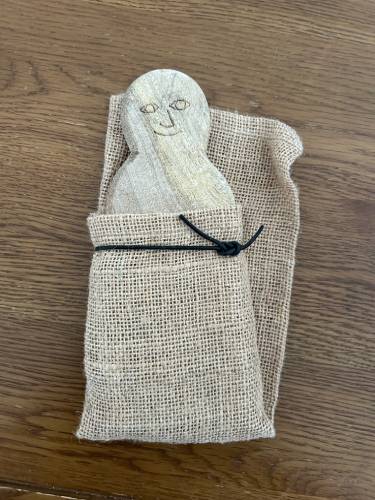
Tooth picks have been used since the Stone Age, with fossil evidence on Neanderthal skulls showing they used tools to pick their teeth!
It became a ritual for medieval people to 'pick their teeth' after meals, and shows that personal hygiene was very important to people at the time.
Nobles would carry around gold or silver toothpicks, whilst those with less money would use ones made from bone or antler.
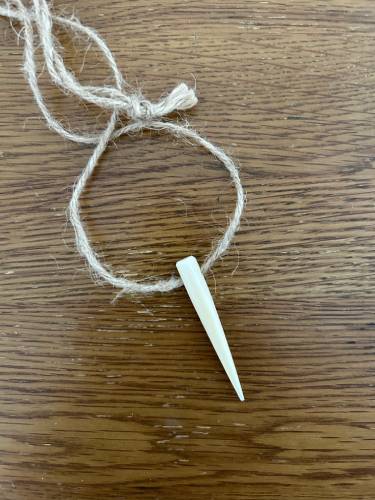
During the Middle Ages, people used herbs to treat a variety of illnesses. They often used plants that grew locally in their gardens, such as mint for stomach issues, or in the countryside, such as dandelions for colds and gallstones.
By the late Middle Ages, people also began using foreign plants more frequently.
For fevers they would use coriander, mint was used for sickness, and liquorice for lung problems.
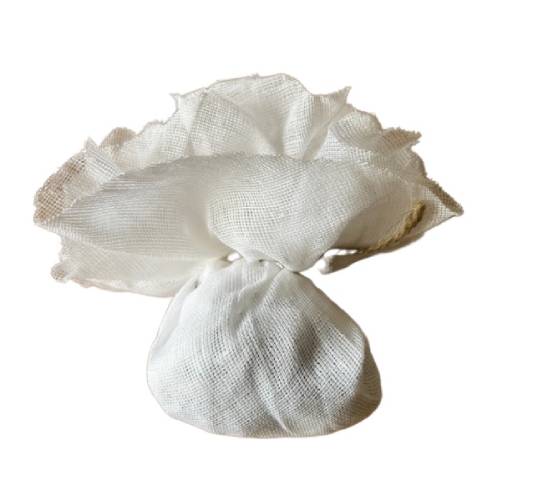
Explore the following themes using the objects
- Childhood
- Health
- Politics
- Religion
- Manufacturing
- Design
- Leisure
- Diet
- Hygiene




